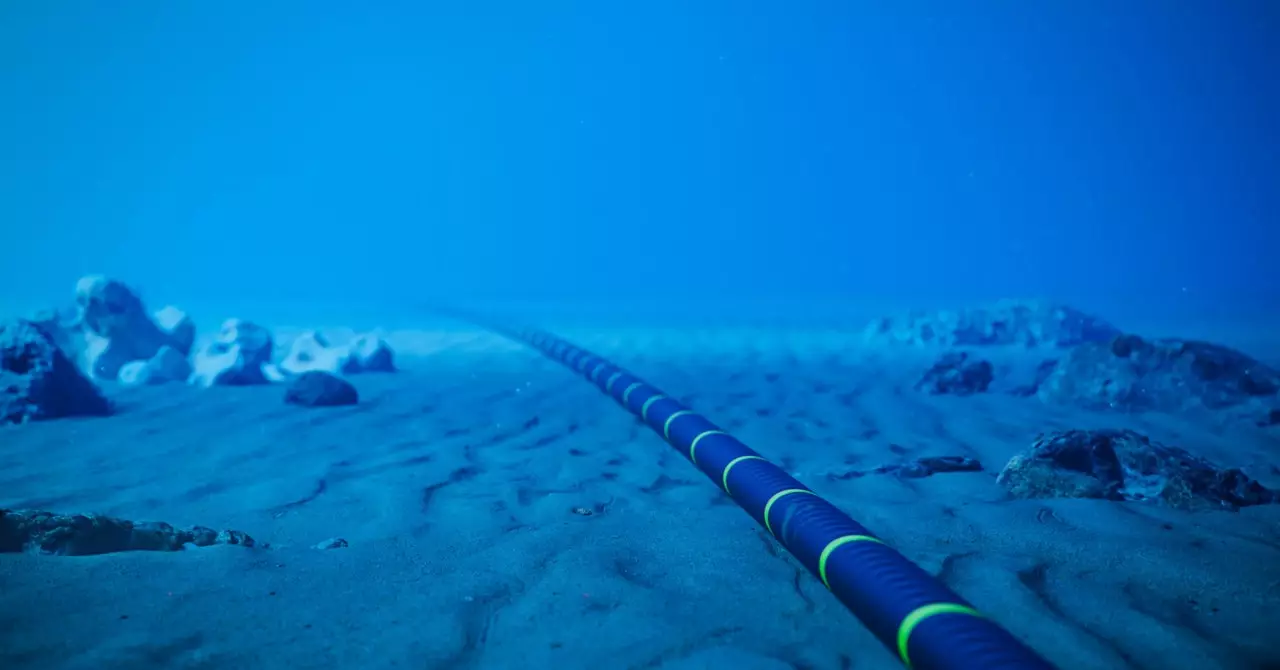In an ambitious stride towards enhancing global internet infrastructure, Meta has unveiled the Waterworth Project—a multibillion-dollar initiative that plans to lay down 50,000 kilometers of undersea cable, connecting five continents. This colossal endeavor not only aims to optimize the management of Meta’s digital ecosystem but also to ensure that the necessary groundwork is laid for advanced product development, especially within the realm of artificial intelligence (AI). With submarine cables accounting for over 95% of intercontinental internet traffic, the significance of this project cannot be overstated. The Waterworth Project is poised to redefine digital connectivity and open up a new chapter in the evolution of internet technology.
Meta claims that the interoceanic cable will eclipse even the circumference of the Earth, setting the stage for it to be the longest cable ever constructed. Landing points are strategically planned in various countries, including India, the United States, Brazil, and South Africa. Such placement is integral to maximizing the benefits of high-speed connectivity, especially in rapidly developing markets like India. The Waterworth Project’s implications stretch beyond just infrastructure; it heralds a new era of digital opportunity, particularly significant for economies that are witnessing a surge in digital investments and infrastructure development.
The impact of the Waterworth Project will particularly resonate within the realm of artificial intelligence. Meta emphasizes that the initiative will provide the high-speed digital highways necessary for AI innovation to flourish globally. With India positioning itself as a potential tech powerhouse, the project aligns perfectly with its aspirations towards an enhanced digital economy. Meta’s commitment, as mentioned in its recent blog post, reflects the company’s understanding of the crucial role that robust internet infrastructure plays in fostering innovation and economic growth, especially in developing nations.
The Waterworth Project isn’t operating in isolation; it has also garnered significant political endorsement. A joint statement from President Donald Trump and Indian Prime Minister Narendra Modi recognizes the project’s potential for strengthening bilateral cooperation between the U.S. and India. This collaboration is particularly relevant in the context of undersea technologies, with both leaders acknowledging the project’s ability to boost connectivity in the Indian Ocean region. Such international support underscores the strategic importance of the Waterworth Project not just as a technological endeavor, but as a catalyst for improved global relations.
In its endeavor to construct an elaborate undersea network, Meta has made strides in improving cable architecture and burial techniques. For instance, the network is designed with 24 fiber pairs to enhance routing efficiency across deep-water pathways, reaching depths of up to 7,000 meters. Furthermore, the company has enhanced its burial techniques, particularly in shallow waters, to mitigate risks from external factors. These improvements reflect a commitment to not only innovation but also to the safety and reliability of the digital lifelines being created.
By launching the Waterworth Project, Meta is positioning itself to be a fierce competitor in the undersea cable domain. Currently, major tech players like Google, Amazon, and Microsoft have invested heavily in undersea cables, with Google holding exclusive rights to numerous routes. However, Waterworth will be the first project entirely owned by Meta. This move signals a recalibration in the competitive landscape of digital infrastructure and positions Meta as a mainstay in the burgeoning global connectivity market.
The Waterworth Project represents more than just an investment in infrastructure; it symbolizes a strategic long-term vision for a connected future. As Meta ventures into this significant undertaking, the convergence of technology, economics, and global cooperation has never been more evident. By enhancing internet connectivity, particularly for developing regions like India, the project is not just about facilitating communication; it is about enabling growth, innovation, and economic transformation on an unprecedented scale. In essence, the Waterworth Project is set to be a beacon of progress in the digital age.


Leave a Reply